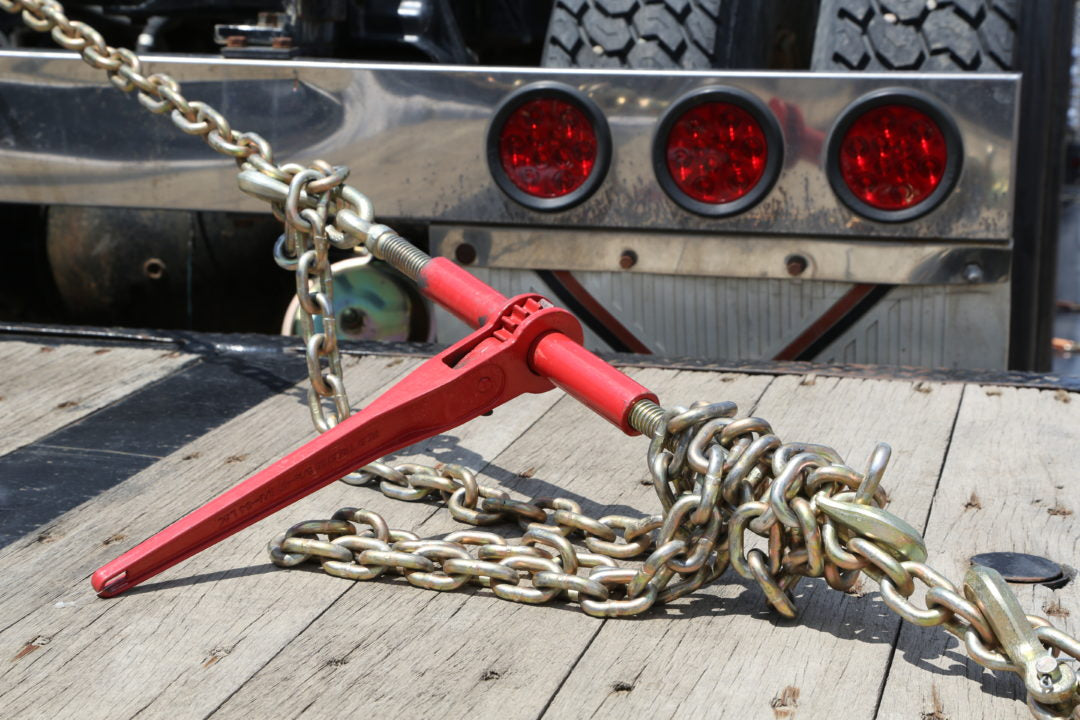
Tips for Avoiding Injury with a Lever Load Binder
Safety is a priority in the trucking industry. In 2012, truck drivers were three times more likely to receive a nonfatal injury on the job compared to the average US adult worker, according to The Centers for Disease Control and Prevention.
The CDC also reports the most common injuries in the trucking industry include strains and sprains, bruising, fractures, cuts and soreness. These issues are typically caused by drivers overexerting, crashing, failing or being hit with an object. Lever load binders can contribute to that risk, but there are precautions drivers can take to keep themselves and others safe.
A lever chain binder used to tighten chain and secure a load to a flatbed trailer.

Lever Load Binders
Lever load binders have been used in the industry for decades and still are today. They use leverage to tighten chain and secure cargo to a trailer. This specific style requires a lot of energy to engage, about 170 lbs., according to the organization Trucking Injury Reduction Emphasis, or TIRES. The force needed to operate the lever can easily cause sprains and strains.
Cheater Bars
Because lever binders require so much strength, drivers are often tempted to use a cheater bar to help tighten and release the handle. Using a cheater bar increases the risk of injury. If the driver loses his or her grip, the lever and bar can snap or kickback and hit the driver. The bar can also fly off the lever and risk hitting people or property nearby. Cheater bars can also exceed the working load limit, causing the strap or chain to break. Cheater bars are considered dangerous, and are not recommended.
Alternative Binders
Ratchet binders are generally known throughout the industry as the safer option and require less energy to engage, about 10 lbs., according to TIRES. The ratchet design also gradually releases unlike a lever. Another option includes the patented QuikBinder Plus which is touted as stronger, safer and more functional compared to a standard ratchet or lever binder.
Lever Binder Safety Tips
If you are going to use a lever binder here are a few precautionary safety tips:
- Routinely inspect the binder for wear, do not use it if you see bending and cracks.
- Do not operate the lever binder with more than one person
- Do not operate the lever binder while you or someone else is standing on the load
- Operate the lever binder in a way that you are on the ground, with secure footing
- Never use a cheater bar to tighten or release the load
- Always tighten, by hand, in a downward manner
- Be aware of the line of fire should you lose your grip
- Always wear gloves to keep your grip and to protect your hands.
US Cargo Control offers many styles of chain binders, including lever, ratchet and the QuikBinder Plus. You can check out the full binder inventory by visiting the website or by calling a sales specialist.
